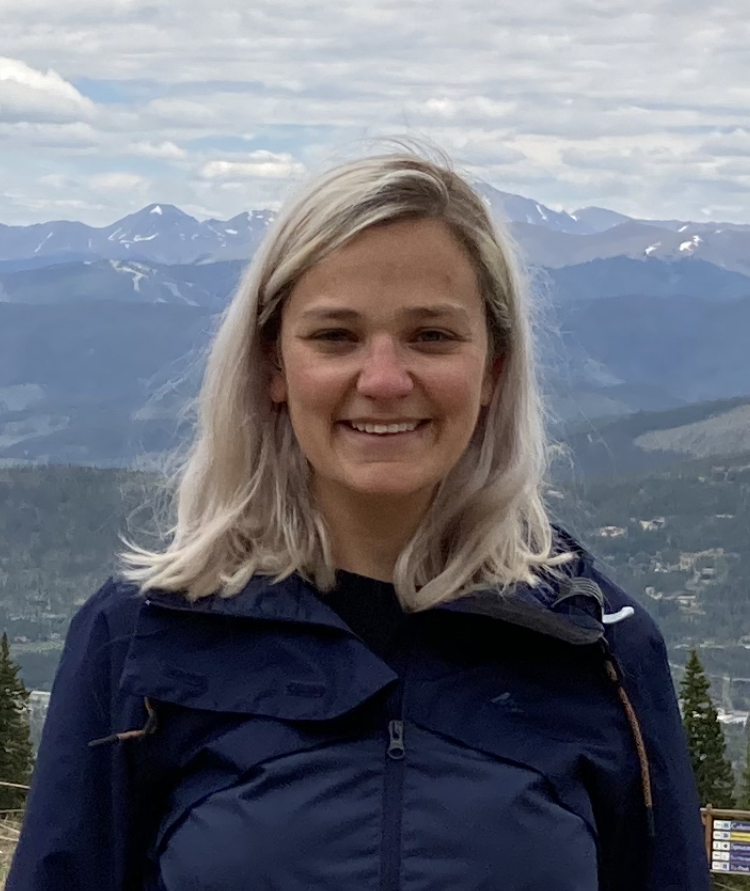Dieser Text ist zur Zeit nur auf Englisch verfügbar...

BEYOND MODELLING invites talks with a mathematical or computer simulation modelling perspective and is open to a wide audience with an interest in modelling and its application to real-world phenomena.
With this seminar series we however strive to reach out beyond their immediate field to also address researchers working in observational or field work. Interdisciplinary and disciplinary modelling approaches are equally welcome.
We also welcome pure and abstract models, e.g., mathematical or computer models of intrinsic “beauty,” including highly simplified toy models. We naturally encourage a clear, or at least indirect, interpretation towards a real-world phenomenon. Topical fields of particular interest are the basics of the tropical climate and related coastal processes, such as ecological and societal dynamics and impacts.
The talks take place in person at the ZMT Seminar Room in Fahrenheitstr. 8 or in Fahrenheitstr. 6
INVITED SPEAKERS (chronological order, latest talk first)
June 2023
27 June, 12:00, 2023 | 12:00 - 13:00 | ZMT Seminar Room, Fahrenheitstr. 6
Title: Global-coupled storm-resolving model: a tool to better understand tropical precipitation
Speaker: Dr. Hans Segura, Max Planck Institute for Meteorology, Hamburg

Abstract:
In this study, we use the one-year simulation of the global-coupled ICON with the Sapphire (ICON-S) configuration in a mesh grid of 5 km to analyze the impact of resolving meso-beta scale processes on representing tropical precipitation. The zonal and meridional seasonal migration and the expansion/shrinking of the terrestrial rainbelt are represented in ICON-S similarly to observations. This result contrasts with the flawed diurnal precipitation cycle, with a more intense peak occurring two hours earlier than in observations. The rainbelt seasonality in the Eastern Pacific and the Atlantic is also well represented in ICON-S. This is not the case in the Indo-Pacific region, where ICON-S struggles to simulate the sea surface temperature pattern distorting the representation of the tropical rainbelt in this region.
With this analysis, we show that the improvements in the representation of precipitation shown on regional domains using storm-resolving models are, indeed, because of resolving meso-beta scale processes and not the influence of the boundary conditions. Resolving meso-beta scale processes also leads to a better representation of the rainbelt and the SST pattern in the E. Pacific and the Atlantic, but it is not enough in the Indo-Pacific region. The extraordinary performance of ICON-S over land in reproducing the seasonal precipitation cycle, even with ocean biases, suggests a mechanism not present in the ocean that makes precipitation over land so robust. The small interannual variability of the summer precipitation area over land in observations also points to the existence of this mechanism.
MAY 2023
May 3, 2023 | 12:00 - 13:00 | ZMT Seminar Room, Fahrenheitstr. 6
Title: Drivers of increasing coastal CO2 uptake identified by a global model with seamless integration of coastal marine carbon dynamics

Speaker: Dr. Moritz Mathis, Helmholtz-Zentrum Hereon, Institute of Coastal Systems
Abstract:
I will present the first global ocean-biogeochemistry model with a seamless integration of coastal carbon dynamics, ICON-Coast, and provide insights from recent simulations on the drivers of the increasing CO2 uptake efficiency of the coastal ocean. Based on the unstructured triangular grid of the model, we globally apply a mesh refinement in the coastal ocean to better resolve complex circulation features as well as ocean-shelf exchange. Moreover, we incorporate tidal currents including bottom drag effects, and extended the model's biogeochemistry component to account for key shelf-specific carbon transformation processes. In this way the model encompasses all coastal areas around the globe within a single, consistent ocean-biogeochemistry model, thus naturally accounting for two-way coupling of ocean-shelf feedback mechanisms at the global scale. Hindcast simulations over the 20th century indicate that the increasing CO2 uptake efficiency of the coastal ocean is mainly driven by the rising pCO2 in the atmosphere (40%), climate-induced changes in the circulation (40%) and increasing historical nutrient loads from rivers (20%). While river inputs caused a significant boost in organic carbon sequestration by enhanced biological productivity, this mainly induced a shift in the resource utilization, from dissolved inorganic carbon delivered by the open ocean towards absorbed CO2 from the atmosphere. Thus the comparatively weak riverine impact on the CO2 uptake at the sea surface is mediated by an enhanced advective export of organic carbon, this way further intensifying the carbonation of the open ocean.
MARCH 2023
March 29, 2023 | 12.00 - 13:00
Title: Modelling the Northern Humboldt Ecosystem
Speaker: Jorge Tam, Instituto del Mar del Perú - IMARPE
Abstract:
There has been a long historical collaboration between ZMT and IMARPE, which has contributed to the modelling of Peruvian ecosystems. The Oceanographic, Ecosystem and Climate Change Laboratory of IMARPE has achieved important advances in the knowledge of atmospheric, oceanic, biogeochemical and ecological processes at different spatial scales, in order to simulate the impacts of El Niño events and climate change, with the aim to contribute with adaptation strategies for vulnerable artisanal communities. Further interactions between ZMT and IMARPE in the framework of the second phase of the Humboldt Tipping Project are highlighted.
March 8, 2023 | 12.00 - 13:00
Title: Towards a unified parameterization framework for subgrid-scale convection and turbulence
Speaker: Cristian Vraciu, University of Bucharest and National Institute of Physics and Nuclear Engineering, Romania
Abstract:
Until recently, the general circulation numerical models ran at resolutions at which the convection was subgrid, and thus, the convection required parameterization. Even if today the resolution of these models has increased such that the deep convection is not fully subgrid, the dry and shallow convection still require parameterization. These parameterization schemes usually assume that in every grid box of the numerical model the convection occupies a very small fractional area, with different schemes describing different types of convection. However, at the present resolutions these assumptions become unrealistic, and thus, new parameterizations need to be developed. For this reason, unified parameterization schemes have been formulated in the recent years. A unified parameterization means either a scheme which is capable to run at any resolution, or a scheme that is able to capture all types of convection (dry, shallow and deep). Although important steps have been made in the recent years towards unified parameterizations, no complete parameterizations have yet been proposed. In this talk, I aim to show how such a complete parameterization could be formulated if one assumes generic convective plumes with stochastic closures.
JANUARY 2023
January 18, 2023 | 11:00 - 12:00
Title: Diurnal warm layers and atmospheric convection in kilometer-scale coupled simulations

Speaker: Radomyra Shevchenko, Max-Planck-Institut für Meteorologie, Hamburg
Abstract:
The phenomenon of sea surface temperature (SST) anomalies created by oceanic diurnal warm layers has been extensively studied for the last decades, but the assessment of its importance for atmospheric convection has come within reach only very recently, thanks to the development of kilometre-scale simulations. We use the output of a global coupled simulation with a 5km horizontal grid spacing and near-surface ocean layers of order O(0.5m) to explicitly resolve both atmospheric convection and diurnal warm layers. As expected, the simulations produce daily SST fluctuations of up to several degrees. The increase of SST during the day causes an abrupt afternoon increase of atmospheric moisture due to enhanced latent heat flux. This increase is followed by an increase in cloud cover and cloud liquid water content. However, although the daily SST amplitude is exaggerated in comparison to reanalysis, the impact on cloud cover and cloud liquid water content only lasts for 5-6 hours. Moreover, the global daily average of these quantities is not influenced by their increase. All in all, we conclude that the global short-timescale impact of diurnal warm layers is negligible.
January 16, 2023 | 12.00 - 13:00
Title: Deep Learning the Colour Patterns of Coral Reef Fishes

DECEMBER 2022
December 13, 2022 | 14:00 - 15:00
Title: Mechanisms driving symbiont shuffling in corals

Speaker: Prof. Dr. Agostino Merico, Head, WG Systems Ecology, ZMT
Abstract:
The success of scleractinian corals in oligotrophic waters of the tropics is the result of an endosymbiotic association with unicellular photoautotrophs called zooxanthellae (the symbiont). By providing photosynthetic products, the symbionts satisfy most of the corals’ metabolic needs. Increasing sea temperature causes the breakdown of this association, the expulsion of the symbionts and, in severe cases, the death of corals. Observational evidence suggests that the shift in the relative abundance of resident symbiont populations within the coral host (symbiont shuffling) enables corals to transcend their thermal tolerance limits because some symbionts are more thermally tolerant than others. The mechanisms of symbiont shuffling, however, are poorly understood. I will present here a new trait-based, acclimation dynamics model with which we show that classic competition theory can explain symbiont shuffling when the competitive abilities of different symbionts are driven by their thermal tolerances. We also show that rapid symbiont shuffling can occur (1) with the presence of a positive feedback, according to which some of the symbiotic benefits received by corals are re-allocated to symbiont growth, thus yielding even higher benefits, or (2) by keeping a background population size of non-dominant symbionts, which enables them to become abundant once conditions become favourable. Our results narrow down the mechanisms that could help reconcile the different patterns observed in symbiont population dynamics and provide new model theories that can be tested with laboratory experiments.
NOVEMBER 2022
November 17, 2022 | 15:00 - 16:00
Title: Impacts of convective treatment on tropical rainfall in ICON-NWP simulations from simple to complex configuration

Speaker: Hyunju Jung | Karlsruhe Institute of Technology, Germany
Abstract:
Tropical rainfall prediction is a challenge in current numerical weather prediction (NWP) models. To improve rainfall prediction in the tropics, it is essential to understand convective nature of the system and interactions of convection with large-scale features such as convectively coupled to equatorial waves which have potentials to improve rainfall predictions in the tropics as they control a substantial portion of rainfall variability in the tropics. Yet, NWP models often struggle to realistically produce convectively coupled equatorial waves. Resolved convection is thought to be key for the improvement by allowing for multi-scale interactions between convection and large-scale circulations. This presentation will discuss about mean tropical rainfall and its variability by assessing their representations in the ICON-NWP experiments between explicit versus parameterized convection. First, a set of ICON-NWP aquachannel simulations will be introduced, convective treatment of which comprises different combinations of deep and shallow convection, and we show time-mean behaviors of the aquachannel simulations, focusing on mean rainfall. To understand different behaviors among the simulations, we will present a novel diagnostic tool for a physically consistent comparison between simulations with different representations of convection. After demonstrating the time-mean behaviors of the simulations, equatorial waves are identified by using complementary wave identification methods. Finally, we will move onto realistic global ICON-NWP simulations and their ability of producing equatorial waves. These realistic simulations demonstrate that large-scale equatorial waves are fairly robust between explicit and parameterized convection and across various horizontal resolutions. This talk highlights our understanding of how different convective treatment alters mean rainfall and convectively coupled equatorial waves, and ultimately provides implications for forecast skills in the tropics.
November 15, 2022 | 14:00 - 15:00
Title: Latitudinal variation in heterotrophic nitrogen fixation associated with sinking marine particles (part II)

Speaker: Dr. Subhendu Chakraborty, Senior Scientist, WG Systems Ecology, ZMT
Abstract:
Nitrogen (N2) fixation by heterotrophic bacteria associated with sinking marine particles is expected to have an important contribution to marine N cycle, but a mechanistic understanding of its regulation and significance is still unknown. We develop a mathematical model for unicellular heterotrophic bacteria growing on sinking marine particles and can fix N2 under suitable environmental conditions. We find that the interactive effects of polysaccharide and polypeptide concentrations in particles, sinking speed of particles, water temperature, and surrounding O2 and concentrations determine the N2 fixation rate inside particles. Our model suggests that anaerobic processes, including heterotrophic N2 fixation, can take place in anoxic microenvironments inside sinking particles even in fully oxygenated marine waters. In contrary to photosynthetic N2 fixation that is more prevalent in low latitude waters, the spatial range of heterotrophic N2 fixation associated with sinking particles is more widespread. The modelled rates are similar to bulk rates measured in the aphotic ocean, and our study consequently suggests that particle-associated heterotrophic N2 fixation contributes significantly to oceanic N2 fixat.
November 10, 2022 | 10:30 - 11:30
Title: Optimal Trading Algorithms: A Machine Learning Approach

Speaker: Sandra Marion Kam Tsemo, African Institute for Mathematical Sciences, Senegal
Abstract:
In this seminar, I will present a method that addresses the problem of finding optimal selling strategies for filling a large execution order. If the execution of a large order is not done efficiently, the resulting bad filling prices may have serious consequences on the market equilibrium. I will present an efficient selling strategy based on a trading algorithm that maximises the volume-weighted average price. The method involves Machine Learning tools such as Reinforcement Learning, Q-Learning, and Stochastic Optimal Control techniques. I will present numerical examples showing that the algorithm significantly improves trading performance and regularly meets or even exceeds market benchmarks. Although applied here to stock markets, Reinforcement Learning and Stochastic Optimisation can be used for addressing a variety of problems, including pure learning problems, dynamic resource allocation problems, or sequential decision problem during an epidemic.
November 1, 2022 | 14:00 - 15:00
Title: Latitudinal variation in heterotrophic nitrogen fixation associated with sinking marine particles

Speaker: Dr. Subhendu Chakraborty, Senior Scientist, WG Systems Ecology, ZMT
Abstract:
Nitrogen (N2) fixation by heterotrophic bacteria associated with sinking marine particles is expected to have an important contribution to marine N cycle, but a mechanistic understanding of its regulation and significance is still unknown. We develop a mathematical model for unicellular heterotrophic bacteria growing on sinking marine particles and can fix N2 under suitable environmental conditions. We find that the interactive effects of polysaccharide and polypeptide concentrations in particles, sinking speed of particles, water temperature, and surrounding O2 and concentrations determine the N2 fixation rate inside particles. Our model suggests that anaerobic processes, including heterotrophic N2 fixation, can take place in anoxic microenvironments inside sinking particles even in fully oxygenated marine waters. In contrary to photosynthetic N2 fixation that is more prevalent in low latitude waters, the spatial range of heterotrophic N2 fixation associated with sinking particles is more widespread. The modelled rates are similar to bulk rates measured in the aphotic ocean, and our study consequently suggests that particle-associated heterotrophic N2 fixation contributes significantly to oceanic N2 fixation.
OCTOBER 2022
October 27, 2022 | 14:00 - 15:00
Title: The atmosphere as a driver for diversity

Speaker: Miguel Garrido Zornoza, Niels Bohr Institute, Copenhagen University




